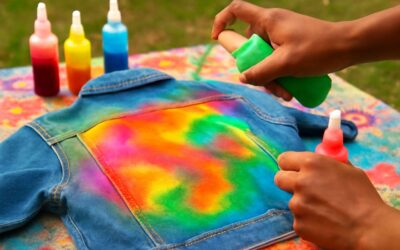
Fabric painting is a fun and creative way to add designs to clothing or to upcycle old classics that you don’t want anymore. It can be done freehand with brushes or using stencils to create a design. The paints used are usually much thicker than normal acrylic paint and come in a wide range of colours that will match your theme. They also dry very quickly and are water-resistant so they can be washed after a period of time without losing their colour or texture.
While it may seem counterintuitive, a light spray of water on the surface of your fabric before you start painting can improve the binding of the paint to the fibres of the material. This is especially important for fabrics that are prone to wrinkles and can help prevent the paint from pulling away or flaking later on.
If you’re new to this type of painting, it’s a good idea to practice on scraps first before you get started on your final project. This can help you to work out the best techniques for your particular style and will also allow you to experiment with different ideas that you might not have been able to try on an actual piece of clothing. Sketching out a design beforehand or even just practicing on paper can also be helpful when it comes to creating a piece of fabric art that you’re proud of.
One of the most common fabrics to use for fabric paint is cotton. It’s a very versatile material that can be used to make a wide variety of projects, from t-shirts to baby clothes and even home decor items like pillows and curtains. It’s also very easy to work with, since you can apply most standard painting techniques to it. You can even draw or outline a picture or design directly on the fabric with a set of fabric markers if you don’t have access to brushes.
For a quick and simple project, try simply dotting paint on your fabric using your fingers. This is a great technique for beginners, since it’s very forgiving and makes it easy to add small dots and blend them. For a more elaborate design, you can try out stippling paint on your fabric, which is achieved by lightly stroking the brush against the surface of the material to deposit paint in a random pattern. This can be very effective if you’re trying to create something that looks realistic or 3D.
If you’re feeling more adventurous, you can also experiment with scribbling with your fingers or a piece of string to create a free-hand style that’s unique and personal to you. This is an excellent way to add texture to your fabric and can also create some really beautiful effects, like smudges or drips of paint that look like they’re melting into the fibers of the cloth. For a really dramatic effect, you can also try stippling puff paint onto your fabric, which is very easy to do with a fabric marker pen or a pencil tip.


0 Comments